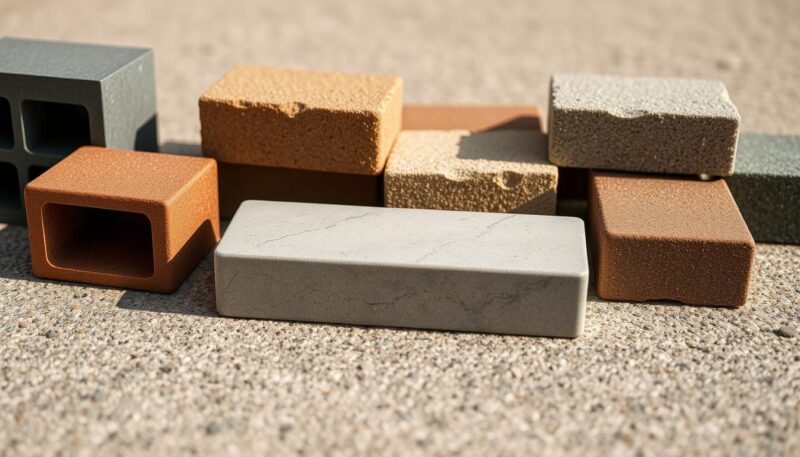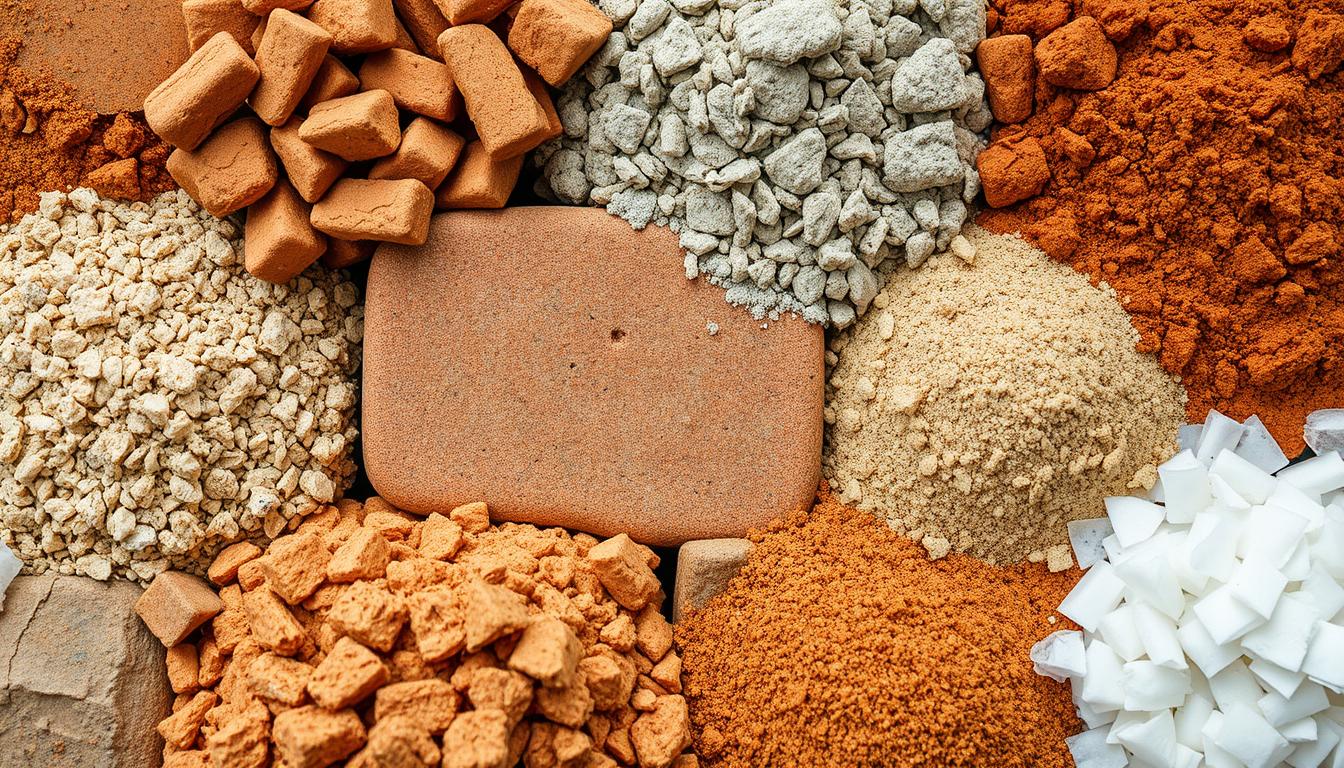In the world of construction, brick composition forms the bedrock of numerous architectural elements. These time-honored building materials have evolved significantly through history, transforming from rudimentary mud bricks to sophisticated modern variants integrating diverse building materials. Astonishingly, fired bricks have been used since around 4000 BC, with early mudbrick structures dating further back to 7400 BC in the Middle East and South Asia. The South Asian civilizations of Mehrgarh and the Indus Valley had adopted the use of fired bricks as early as 3000 BC.
From the grandiose monuments of ancient Mesopotamia crafted between 5000 and 4500 BC using these robust materials to the elegant glazed bricks of the Hanging Gardens of Babylon documented in 604 BC, bricks embody structural integrity and resilience. Fast-forward to Neolithic China around 4400 BC, where fired bricks appeared to be mass-produced during the reign of Qin Shi Huangdi, the first Emperor of China. Over centuries, brick-making techniques evolved, documented meticulously in the 1103 carpenter’s manual, the Yingzao Fashi, illustrating the importance of this building material in architectural history.
The Roman Empire standardized brick production by the first century CE, marking another significant milestone. Bricks emerged as a preferred material during the Industrial Revolution in England due to their speed and economy of production compared to stone. By the 19th century, more than 10 billion bricks were produced annually, heralding their use in large-scale architectural projects like the Empire State Building, which utilized an astounding 10 million bricks.
Key Takeaways
- Brick composition incorporates various building materials, defining their color, strength, and use.
- Fired bricks have historical significance, dating back to 4000 BC.
- Modern brick variants include clay, concrete, sand lime, and fly ash.
- Bricks play a pivotal role in maintaining the structural integrity of buildings.
- The Industrial Revolution marked a significant increase in brick production.
- The Empire State Building showcases the extensive use of bricks in modern architecture.
The Traditional and Modern Composition of Bricks
Bricks have been an essential construction material throughout history, evolving significantly from traditional compositions to modern adaptations. As you explore the manufacturing process and the various brick types available today, you will notice a fascinating blend of material science, historical context, and design application. This section delves into the traditional and modern composition of bricks, providing a comprehensive understanding of their unique properties and applications.
Clay Bricks
Clay bricks are perhaps the most traditional type of brick, primarily composed of silica (SiO2) and alumina (Al2O3), which account for around 55% and 30% of their weight, respectively. Their characteristic red color is imparted by iron oxide (Fe2O3), which makes up about 8% of the bricks’ weight. The manufacturing process involves firing the bricks in kilns at high temperatures, often incorporating iron oxide to enhance durability. Clay bricks offer excellent thermal insulation, which can significantly reduce energy costs. Furthermore, the small proportion of magnesia (MgO) helps prevent shrinkage and provides a yellow tint to the bricks. This type of brick is widely appreciated for its historic relevance and superior performance in various design applications.
Concrete Bricks
Concrete bricks are a versatile option in modern construction, known for their design flexibility and sound insulation properties. Made from a mixture of cement, sand, water, and aggregates, these bricks can be easily pigmented and molded into various shapes. While concrete bricks are strong and resistant to moisture, they can experience shrinkage over time, making them less durable than their clay counterparts. Despite this, they are ideal for a wide range of applications, particularly in areas requiring customized designs and coloration. The modern manufacturing process of concrete bricks allows for innovative uses in contemporary architectural designs.
Fly Ash Bricks
Fly ash bricks represent an environmentally friendly innovation in brick production, incorporating byproducts from coal combustion. These bricks are lightweight and exhibit low heat and water absorption, which contribute to their eco-friendly attributes. The inclusion of fly ash enhances the bricks’ sustainability by repurposing industrial waste, making them an attractive option in green building practices. Although fly ash bricks may develop strength more slowly than traditional bricks, they provide adequate durability and have a positive environmental impact. Their use in design applications reflects a growing trend towards sustainable construction materials.
| Brick Type | Primary Composition | Key Properties | Applications |
|---|---|---|---|
| Clay Bricks | Silica (55%), Alumina (30%), Iron Oxide (8%), Magnesia (5%) | Thermal Insulation, Durability, Historic Relevance | Residential Buildings, Historical Restoration |
| Concrete Bricks | Cement, Sand, Water, Aggregates | Design Flexibility, Sound Insulation | Modern Architecture, Customized Projects |
| Fly Ash Bricks | Fly Ash, Clay | Lightweight, Low Absorption Rate, Eco-Friendly | Green Buildings, Sustainable Construction |
What Are Bricks Made Of? Exploring Modern Materials and Techniques
The world of home building continually evolves as modern materials and innovative methods reshape the landscape. These advancements focus on utilizing eco-friendly materials to align with sustainable building practices while adhering to industry standards. Today’s brick production showcases a diverse range of materials that not only meet but often exceed the performance expectations of traditional clay bricks. Two such notable advancements include Sand Lime Bricks and bricks made from recycled materials.
Sand Lime Bricks
Sand Lime Bricks are a prime example of modern materials in the construction industry. Comprised largely of sand (88-92%) and lime (8-12%), these bricks are chemically set under heat and pressure. While they feature uniform color and texture, their water and fire resistance are often less robust compared to other types of bricks. Nonetheless, they’re valued for their clean appearance and smooth finish, proving quite effective in meeting specific architectural aesthetics and performance requirements.

Eco-Friendly and Recycled Materials
In recent years, there has been a significant push towards utilizing eco-friendly materials in brick production to support sustainable building practices. Recycled materials, such as fly ash and reclaimed industrial byproducts, are now used to craft durable and environmentally responsible bricks. For instance, Fly Ash Bricks, which incorporate substantial amounts of fly ash and cement, not only weigh less than traditional bricks but also demonstrate enhanced durability in severe freeze-thaw cycles. These attributes are particularly crucial in maintaining structural integrity in various climatic conditions.
The use of eco-friendly materials significantly reduces the environmental footprint of brick production. This approach not only supports sustainable building principles but also ensures compliance with rigorous industry standards. By incorporating recycled materials, manufacturers are developing innovative solutions that contribute to ecological health while producing bricks capable of withstanding the operational demands of modern construction.
Conclusion
In your journey through the world of bricks, understanding their diverse compositions has never been more critical. From traditional clay, enriched with minerals such as kaolinite and illite, to modern materials like concrete and fly ash, the evolution of bricks is a testament to human ingenuity in construction basics. The inclusion of durable materials, such as shale and fly ash, not only enhances the resilience of bricks but also underscores the importance of sustainability and building aesthetics in contemporary projects.
As you plan your construction endeavors, take into consideration the innovative options available today. Concrete bricks, formed by a meticulous blend of sand, stone, water, and cement, promise sturdy and long-lasting results, whereas sand-lime bricks offer uniformity with a caveat of vulnerability to water damage. The rise of eco-friendly solutions, like fly ash bricks derived from coal byproducts, reflects an admirable shift towards greener practices within material science.
Moving forward, the creative potential in home building and architecture continues to expand. Eco-friendly and recycled materials, such as those developed by companies like Petersen Tegl, offer infinite recyclability, adding another dimension to durable design. By prioritizing both aesthetic appeal and environmental responsibility, you contribute to a construction landscape that balances heritage conservation with modern innovation. Whether you choose traditional bricks for their historical integrity or modern alternatives for their ecological benefits, your selection plays a crucial role in fostering sustainable and resilient structures.

